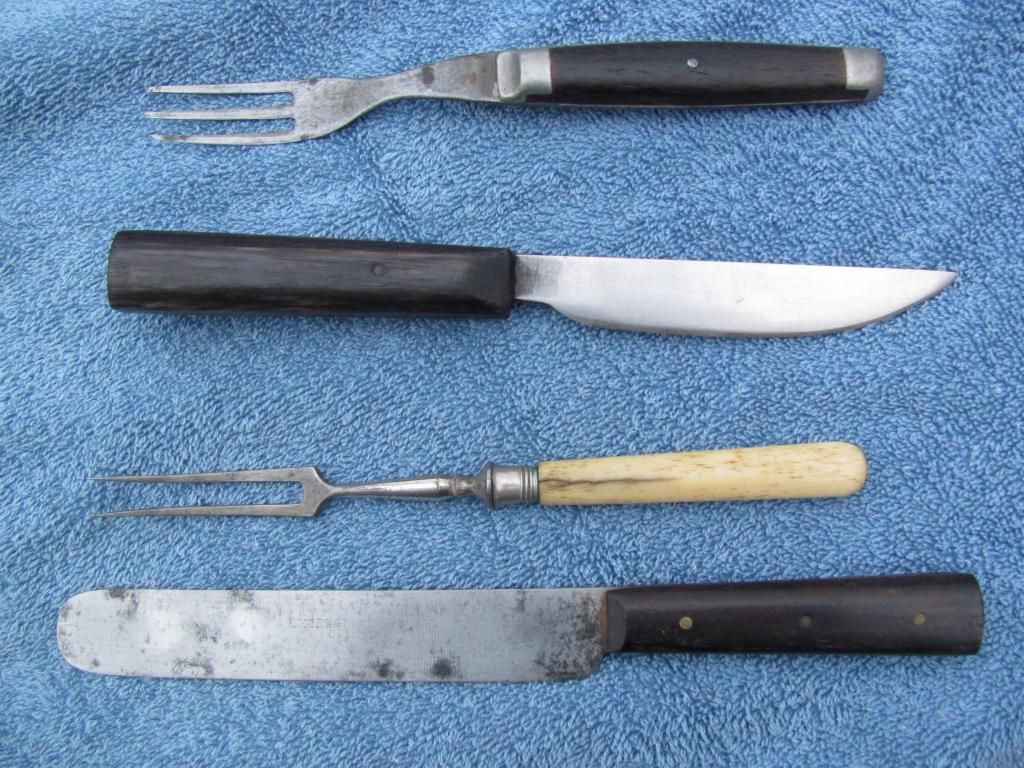We talked on this forum about using M1 or M2 high-speed steel to make a knife. I did it, it is hard, but can be ground and sanded.
I made a miniature (4.25" blade) trade knife, copying shamelessly from those I saw on this forum. 1/2 tang, ebony scales, one copper pin.
The other knife and forks are bonafide antiques. My daughter plans to use all of these. My small trade knife is to allow her to cook since the other old stuff would not be useful for cutting meat and vegetables.The one I made is pretty sharp.

I made a miniature (4.25" blade) trade knife, copying shamelessly from those I saw on this forum. 1/2 tang, ebony scales, one copper pin.
The other knife and forks are bonafide antiques. My daughter plans to use all of these. My small trade knife is to allow her to cook since the other old stuff would not be useful for cutting meat and vegetables.The one I made is pretty sharp.






